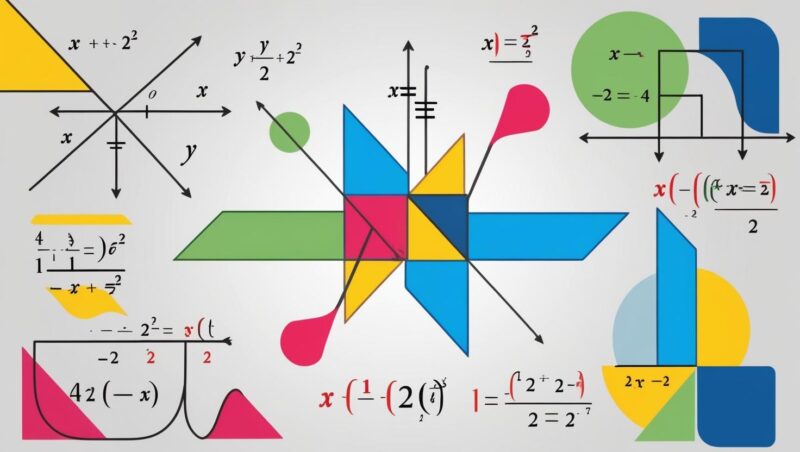
Share Post:
Have you ever tried to write a number as a fraction and found that it just doesn’t fit? Some numbers are tricky like that! They go on forever without ever making a simple pattern. These are called irrational numbers.
Long ago, a man named Hippasus discovered these special numbers, but people didn’t believe him. They thought every number could be written as a fraction. Imagine their surprise when they found out some numbers just don’t work that way!
In this article, you will learn what makes a number irrational, see fun examples, and find out why these numbers are so special. Get ready to explore some of the strangest and most amazing numbers in math!
Table of Contents
ToggleWhat Is an Irrational Number?
Some numbers can be written as fractions like 1/2 or 3/4. These are rational numbers and they are closely related to natural numbers. But some numbers do not fit into a fraction no matter how hard you try. These are called irrational numbers.
They go on forever when written as a decimal, and they never follow a repeating pattern.
For example, π (pi) = 3.14159265… keeps going forever without repeating.
These numbers are still real numbers because we can find them on a number line, but they behave in a strange way!
How Do Irrational Numbers Work?
These numbers do not follow simple rules like other numbers. They can’t be written as fractions, and their decimal forms never stop or repeat.
For example, take √2 (the square root of 2). When you type it into a calculator, you get 1.41421356… and it keeps going! It has no pattern and never ends, so it is an irrational number.
Some other numbers like √3, π, and e work the same way. They are useful in math, but you can never write them as a simple fraction.
How Are They Different from Other Numbers?
- Rational numbers: Can be written as a fraction (1/2, 3/5, -4, 0.75).
- Irrational numbers: Cannot be written as a fraction (π, √5, e).
Key Differences
| Rational | Irrational |
|---|---|
| Can be written as a fraction | Cannot be written as a fraction |
| Decimal ends or repeats | Decimal never ends or repeats |
| Examples: 1/2, 0.333…, 5 | Examples: π, √2, e |
If a number stops or repeats in decimal form, it is rational. If it keeps going forever without a pattern, it is irrational!
How to Tell If a Number Is Irrational?
- Look at the decimal – If it never ends and never repeats, it is irrational.
- Try to write it as a fraction – If you cannot, it is irrational.
- Check square roots – If a number is not a perfect square, its square root is irrational (Example: √3, √7).
Examples
- 0.75 → Rational (can be written as 3/4)
- √9 → Rational (equals 3)
- √2 → Irrational (equals 1.414213… and never ends)
- π → Irrational (goes on forever without a pattern)
Why Some Numbers Can’t Be Written as Fractions?
Most numbers can be written as a fraction like 1/2, 3/4, or 7/8. If you want to improve your fraction skills, check out these fun fraction activities! But some numbers just don’t fit into a fraction, no matter how hard you try.
Why does this happen?
- Fractions have a repeating or ending decimal (0.5, 0.333…, 0.25).
- Irrational numbers have a decimal that goes on forever without repeating (π = 3.14159265…).
Example: Why is π irrational?
People have tried for centuries to find a fraction for π, but no fraction is exactly equal to π. The closest one is 22/7, but that is only an estimate. The real value of π never ends!
Numbers like √2, √5, and e also don’t fit into any fraction, so they are irrational.
Rules That Irrational Numbers Follow

Adding a rational number to an irrational number = Irrational number
- Example: 3 + √2 = Irrational
Multiplying an irrational number by a rational number = Irrational number
- Example: 5 × π = Irrational
Adding two irrational numbers = Sometimes rational, sometimes irrational
- Example: √2 + (-√2) = 0 (a rational number!)
Multiplying two irrational numbers = Sometimes rational, sometimes irrational
- Example: √2 × √2 = 2 (a rational number)
Examples of Irrational Numbers
Many numbers we use every day are actually irrational.
Common Irrational Numbers
- π (Pi) = 3.141592653… (used in circles)
- √2 = 1.414213… (square root of 2)
- √3 = 1.732050… (square root of 3)
- √5 = 2.236067… (square root of 5)
- e = 2.718281… (used in growth and science)
- The Golden Ratio (φ) = 1.618033… (found in nature and art)
How do we use them?
- π helps us measure circles.
- √2 helps in building and geometry.
- e is used in money, science, and computers.
- The Golden Ratio appears in art and nature.
Who Found the First Irrational Number?

A long time ago, people thought all numbers could be written as fractions. But then, a Greek philosopher named Hippasus made a shocking discovery!
He found out that √2 could not be written as a fraction. The other mathematicians didn’t believe him. Some legends even say they threw him into the sea because they didn’t want to believe these numbers existed!
But Hippasus was right. Today, we know that many numbers are irrational, and they help us in science, math, and everyday life.
Where Do We See Them in Real Life?
These numbers aren’t just found in math problems—they appear all around us!
Where can we find them?
- Nature – The Golden Ratio (φ) is found in flowers, seashells, and even galaxies.
- Circles – Every time we measure a circle’s circumference or area, we use π (Pi).
- Architecture – Builders use √2 and √3 when designing perfect angles and structures.
- Music – Some musical scales are based on irrational numbers for the best sound.
- Technology – Computers and science use e (Euler’s number) to predict growth and change.
Even though they look strange, we use them every day without even realizing it!

Why Are Irrational Numbers Important?
They help us solve real-world problems. Without them, many things we use today wouldn’t work!
Why do we need them?
- Building and design – Architects and engineers use square roots to create strong buildings.
- Space and planets – Scientists use π to study planets and orbits.
- Money and banks – Banks use e to calculate interest and money growth.
- Medicine and science – These numbers help doctors in medical formulas and technology.
What Happens When We Add or Multiply Irrational Numbers?

Addition
Irrational + Rational = Irrational
- Example: π + 2 = Irrational
Irrational + Irrational = Can be rational or irrational
- Example: √2 + (-√2) = 0 (Rational)
Multiplication
Irrational × Rational (not 0) = Irrational
- Example: π × 3 = Irrational
Irrational × Irrational = Can be rational or irrational
- Example: √2 × √2 = 2 (Rational)
Tricks to Find Irrational Numbers Fast
Want a quick way to spot an irrational number? Use these easy tricks!
- Look at the decimal – If it never ends and never repeats, it is irrational.
- Check the square root – If a number is not a perfect square, its square root is irrational (Example: √3, √7).
- Try to write it as a fraction – If you cannot, it is irrational.
- Look for famous irrational numbers – If you see π, e, or the Golden Ratio (φ), they are always irrational!
Cool Facts About Irrational Numbers
Here are some fun and surprising facts about irrational numbers!
- Pi (π) never ends – Mathematicians have calculated it to trillions of digits, but it keeps going!
- Euler’s number (e) is everywhere – It helps with banking, science, and technology.
- The Golden Ratio (φ) is in art and nature – People use it to design buildings, paintings, and even logos!
- √2 was the first irrational number – The Greek mathematician Hippasus discovered it, and some say he was thrown into the sea!
- There are infinite irrational numbers – Between any two numbers, there are infinitely many irrational numbers!
Test Your Knowledge: Irrational Numbers Quiz!
Let’s test what you learned!
Irrational numbers are fascinating and unique! You’ve learned what makes them special, explored key examples like π, √2, and e, and discovered their role in mathematics and the real world.
Now it’s time to put your knowledge to the test!
Correct!
Wrong!
Correct!
Wrong!
Correct!
Wrong!
Correct!
Wrong!
Correct!
Wrong!
Correct!
Wrong!
Correct!
Wrong!
Correct!
Wrong!
Correct!
Wrong!
Correct!
Wrong!
Share the quiz to show your results !
Subscribe to see your results
I got %%score%% of %%total%% right
Loading...
If you got all the answers right, you’re officially an irrational numbers expert! 🤓
If you missed a few, don’t worry—learning is all about practice.
Last Words
Irrational numbers might seem strange, but they are everywhere in math and the real world. They never end, never repeat, and can’t be written as fractions, yet they help us build strong buildings, explore space, and even create art.
Imagine a world without π—no perfect circles! Without √2, architects couldn’t design right angles. Even e helps banks and scientists predict growth. Irrational numbers may be tricky, but they make life better!
Math is more than just numbers on a page. It helps us solve real-world problems, understand patterns, and make amazing discoveries. Want to see how well you understand fractions, geometry, algebra, and irrational numbers? Try a 7th Grade Math Quiz and put your math skills to the test! Keep learning, keep asking questions, and remember—math is full of surprises!
Related Posts:
- Natural Numbers - Definition, Properties, and Examples
- What is a Point in Geometry? Definition and Examples
- Whole Numbers Explained - Definition, Uses, and Key…
- Complete Guide to Teaching Math with Base 10 Blocks…
- What Are the Types of Polynomials? Definitions and Examples
- 9 Fun Math Games Inspired by Real Sports That Teach…











